Bichon Frise cannot but cause a smile: small, agile, and quick-witted dogs love attention and try to attract it with play or tricks. One of the best companion dogs, they get along in any home, get along with children and other animals. They demand more attention and love from the owner than efforts to care for their aristocratic person.
Appearance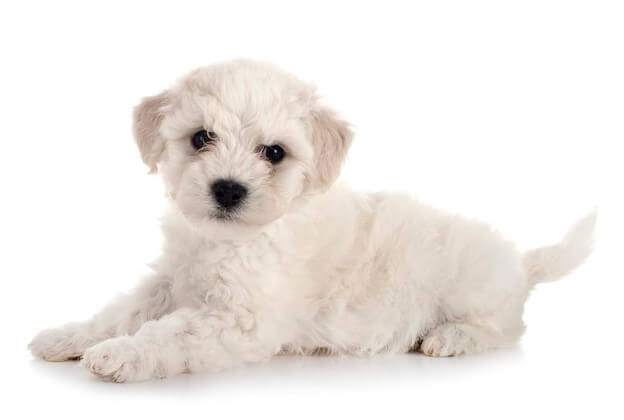
It is a decorative companion dog with an aristocratic proud bearing, long snow-white hair, and a playful character. The dog should have a well-developed chest, wide croup, sinewy legs. The tail is curved, but does not lie on the back and does not curl into a ring. Hanging ears, with elongated hairs. The international standard identifies the following characteristics of the breed:
- The weight. On average, 3-6 kg.
- Height at the withers. Up to 30 cm.
- Color. Exceptionally white. Wool 7-10 cm long with corkscrew curls. It is noteworthy that it does not cause allergies and, due to its specific structure, almost does not climb during molting.
History of Origin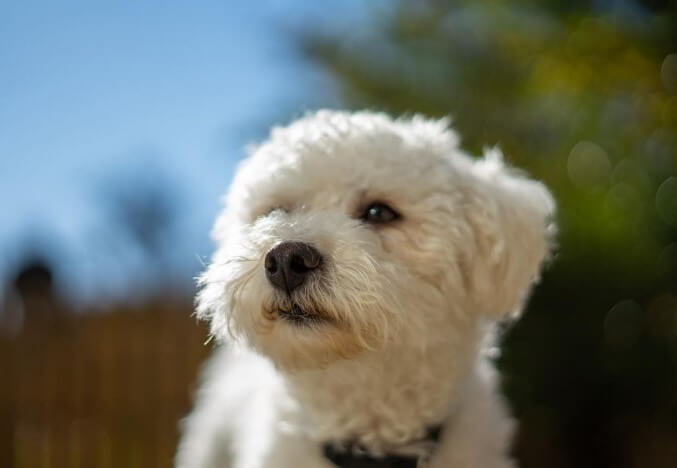
This is an ancient breed, therefore its history is replete with assumptions and guesses (mankind has learned to document its own breeding successes only recently). According to some reports, similar small light-colored dogs were known on the territory of modern Italy and Spain as early as 1 thousand years ago. But scientists cannot yet prove or disprove the relationship with the modern Bichon Frise.
According to one of the widespread versions, the medieval ancestors of all Bichon Frise lived in the Canary Islands. They were not a vacation paradise and offshore at that time, and they got their name not because of the birds, but precisely because of the dogs that lived there. Local fishermen used small-sized dogs to protect food in warehouses. From the progenitors of Bichon Frise, the curly coat that still attracts attention, and the first name, Barbie-Shon, inherited.
The breed received its modern look already by the XIV century in France. There she came to the court so much that for the next five centuries role as hunters and rat-catchers of Bichon Frise was forgotten. Dogs have become an enduring squeak of fashion and an indispensable companion of high society. King Francis called them infants (the title of princes and princesses who do not inherit the throne), and his follower Henry III personally wore a basket with favorites around his neck.
France was a kingdom, became an empire, turned into a republic, revived the monarchy, and again became a republic, and the fashion for white dogs did not pass. It was this requirement for their pets that the French dog handlers wrote in the first breed standard, adopted in 1933. Its official name is Bichon a Poil Frise in a non-literal translation means a curly lapdog that looks like a velvet sponge pad.
Coat Care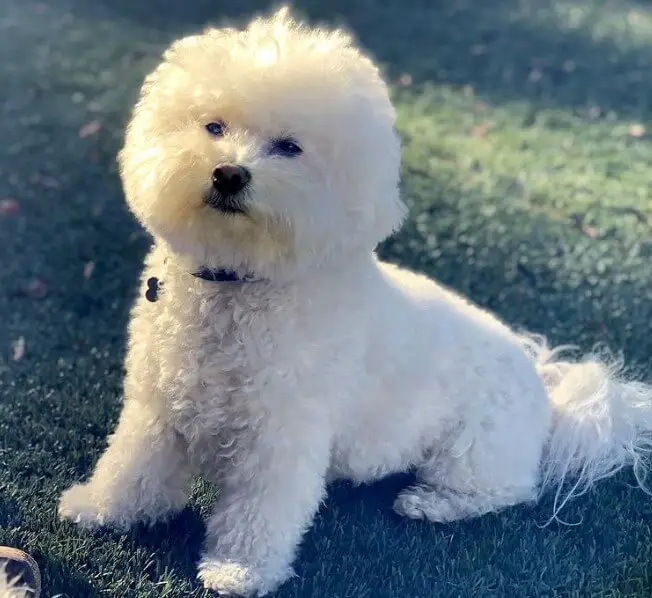
The luxurious curly fur of the Bichon Frise is the main and unique decoration of these dogs. Unlike its brethren, which change their fur during shedding, the coat of the Bichon Frise grows throughout its life, just like the hair of humans. Because of this, grooming procedures are essential for them.
- Combing. It should be done daily. It is important not to allow the appearance of knots and pellets in the wool. Combs are used with different tooth frequencies. For the undercoat, you need a slicker, for styling, a massage brush. You can use a special spray to make it easier to detangle and remove tangles.
- Bathing. The pet is bathed twice a month or as the coat gets dirty. It is important to use only specialized shampoos. In case of itching, dandruff, or similar manifestations after washing, change the brand of cosmetics. If symptoms persist, contact your veterinarian. For the autumn-winter period, it is worth buying clothes that will protect the wool from dirt and dampness. After washing, the dog must be thoroughly dried, otherwise, there is a risk of fungus and various skin diseases.
- A haircut. Perform every 1.5-2 months. The main goal is hygiene. To participate in exhibitions, only the simplest haircut is done, emphasizing the breed standards. If the pet’s show career is not exciting, there are no limits for creativity in Bichon Frise hairstyles. Fast-growing wool in this case only increases the number of possible images.
Feeding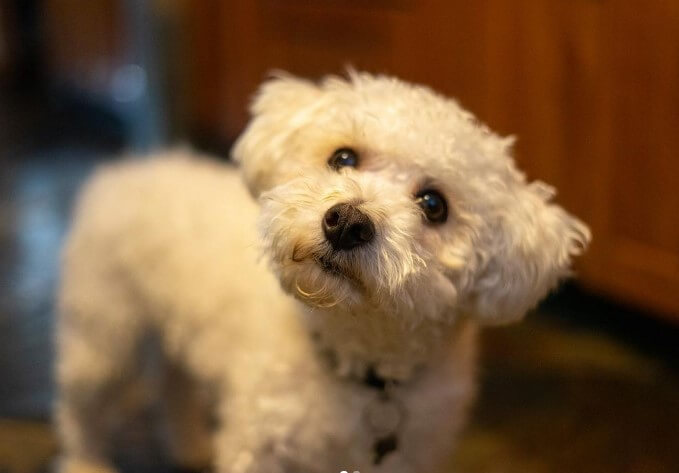
Despite the mini-size, Bichon Frise has an excellent appetite with a complete lack of a sense of proportion. It is important not to overfeed the dog, to monitor the balance of fats and proteins in its diet.
You can feed both ready-made feed and natural food. Since the breed is prone to allergies, the choice of food will have to be approached very carefully, monitoring the pet’s reaction to any change in the diet. Among the ready-made feeds, experts recommend buying only well-known brands of at least premium class. If you decide to cook on your own, keep in mind that this dog’s diet must include:
- raw meat or after heat treatment;
- fish without bones;
- porridge;
- vegetables and fruits.
Training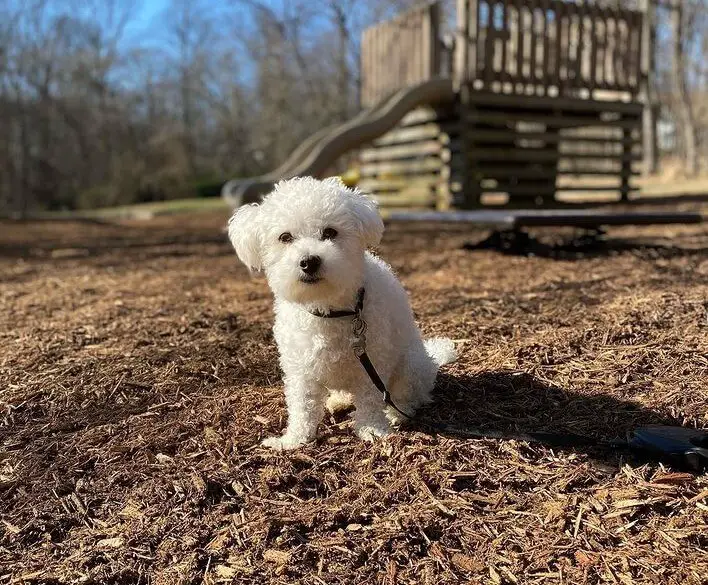
The natural loveliness of character, sociability, and socialization make the education of the Bichon Frise accessible even for people who have not previously communicated with dogs. Experienced dog breeders emphasize two basic postulates on which all training is based.
- Severity. Don’t be fooled by adorable looks and cute demeanors. The Bichon Frise is a dog that needs discipline and education. Permissiveness and “small dog syndrome” will spoil the character of the pet and make it uncontrollable on the street, which, given its small size, threatens it with trouble.
- Attention. These dogs by nature are very dependent on a person, and you need to be ready to pay a lot of attention to him from the first day. Often neat and obedient, deprived of communication and affection, Bichon Frise can become real vandals in the apartment and hooligans on the street.
The rest of the education of the Bichon Frise is not much different from the training of other small dogs.
Health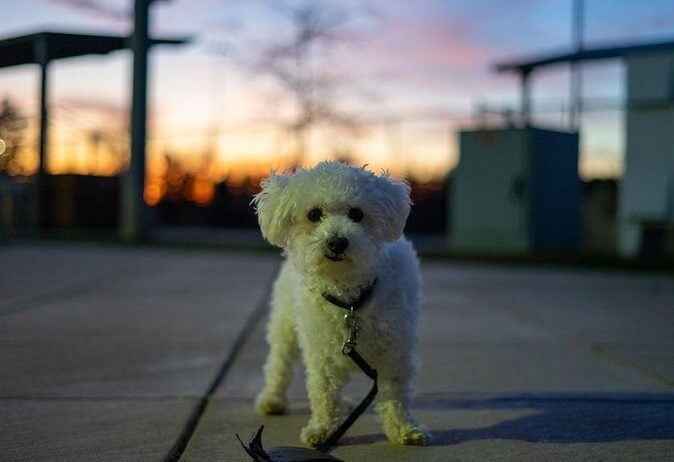
Pay attention to the behavior and appearance of the pet: whether it has become less active, whether its coat has faded, whether there are scratches or rashes on the skin, whether the eyes and ears are clean. Among the representatives of this breed, the following diseases are most common:
- allergy;
- dermatitis;
- urolithiasis disease;
- diabetes;
- hypotrichosis (hormonal malfunction of the thyroid gland, leading to hair loss);
- dislocation of the patella;
- atlantoaxial instability;
- epilepsy.
Congenital displacement of the first cervical vertebra can manifest itself with age or due to trauma. It is painful for a dog with this condition to move its head. It is treated with a surgical or conservative method using a corset.
Special attention in the daily care of a pet should be given to its eyes since the breed is prone to the following ophthalmological diseases:
- cataract – clouding of the lens;
- entropion – turn of the century;
- dystrophy of the cornea of the eye – a decrease in the transparency of the cornea.

my bichon frise keep getting ear infections what can I do to keep them at Bay please
i would like to know more about these skin tags or moles they get , my bichon has alot of them , is there anything that helps